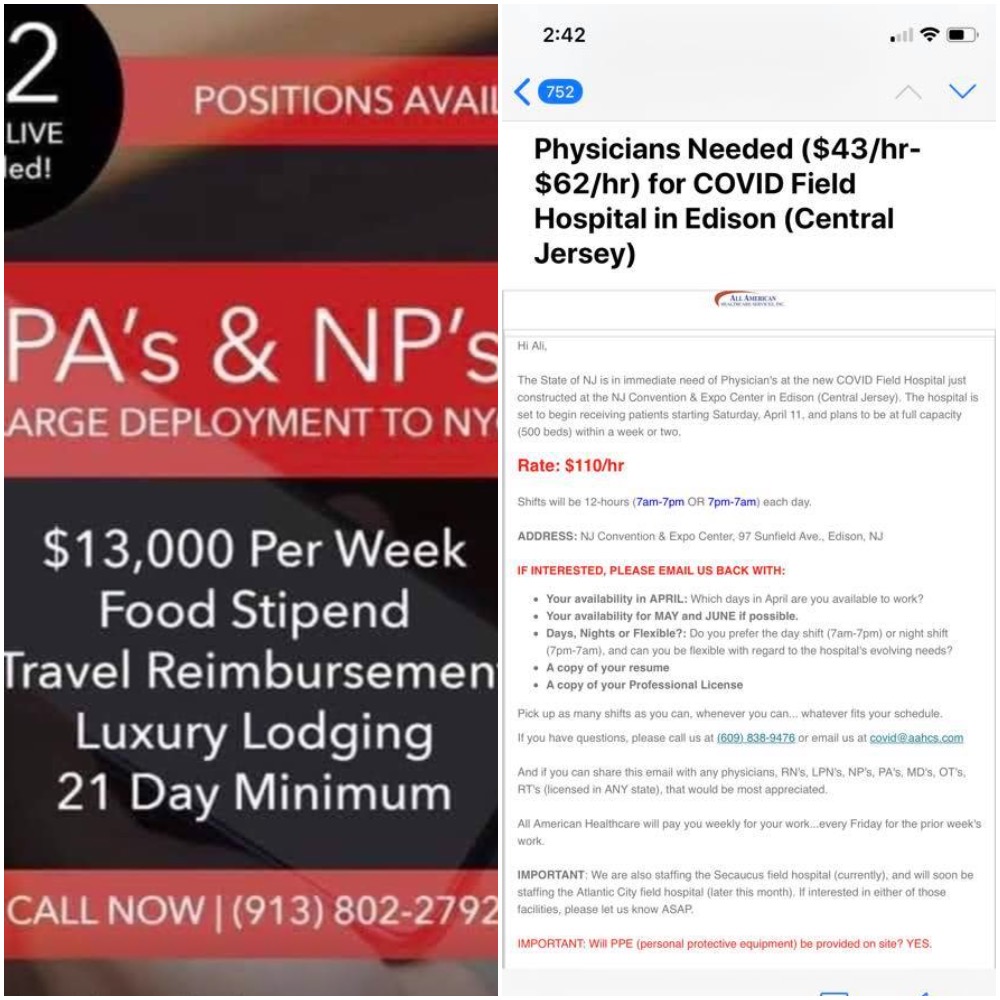I think it’s 6.2% of your annual Medicare billing that drops as a bonus, not a loan. We are in network with every insurer so don’t have to worry about the balance billing part. We did not apply for that it just dropped into the account. I’m sure Envision will pass along a rightful share to all its docs...
CARES Act Provider Relief Fund
President Trump is providing support to healthcare providers fighting the COVID-19 pandemic. On March 27, 2020, the President signed the bipartisan CARES Act that provides $100 billion in relief funds to hospitals and other healthcare providers on the front lines of the coronavirus response. This funding will be used to support healthcare-related expenses or lost revenue attributable to COVID-19 and to ensure uninsured Americans can get testing and treatment for COVID-19.
Immediate infusion of $30 billion into healthcare system
Recognizing the importance of delivering funds in a fast and transparent manner, $30 billion is being distributed immediately – with payments arriving via direct deposit beginning April 10, 2020 – to eligible providers throughout the American healthcare system.
These are payments, not loans, to healthcare providers, and will not need to be repaid.
Who is eligible for initial $30 billion
- All facilities and providers that received Medicare fee-for-service (FFS) reimbursements in 2019 are eligible for this initial rapid distribution.
- Payments to practices that are part of larger medical groups will be sent to the group's central billing office.
- All relief payments are made to the billing organization according to its Taxpayer Identification Number (TIN).
- As a condition to receiving these funds, providers must agree not to seek collection of out-of-pocket payments from a COVID-19 patient that are greater than what the patient would have otherwise been required to pay if the care had been provided by an in-network provider.
- This quick dispersal of funds will provide relief to both providers in areas heavily impacted by the COVID-19 pandemic and those providers who are struggling to keep their doors open due to healthy patients delaying care and cancelled elective services.
- If you ceased operation as a result of the COVID-19 pandemic, you are still eligible to receive funds so long as you provided diagnoses, testing, or care for individuals with possible or actual cases of COVID-19. Care does not have to be specific to treating COVID-19. HHS broadly views every patient as a possible case of COVID-19.
How are payment distributions determined
- Providers will be distributed a portion of the initial $30 billion based on their share of total Medicare FFS reimbursements in 2019. Total FFS payments were approximately $484 billion in 2019.
- A provider can estimate their payment by dividing their 2019 Medicare FFS (not including Medicare Advantage) payments they received by $484,000,000,000, and multiply that ratio by $30,000,000,000. Providers can obtain their 2019 Medicare FFS billings from their organization's revenue management system.
- As an example: A community hospital billed Medicare FFS $121 million in 2019. To determine how much they would receive, use this equation:
- $121,000,000/$484,000,000,000 x $30,000,000,000 = $7,500,000
What to do if you are an eligible provider
- HHS has partnered with UnitedHealth Group (UHG) to provide rapid payment to providers eligible for the distribution of the initial $30 billion in funds.
- Providers will be paid via Automated Clearing House account information on file with UHG or the Centers for Medicare & Medicaid Services (CMS).
- The automatic payments will come to providers via Optum Bank with "HHSPAYMENT" as the payment description.
- Providers who normally receive a paper check for reimbursement from CMS, will receive a paper check in the mail for this payment as well, within the next few weeks.
- Within 30 days of receiving the payment, providers must sign an attestation confirming receipt of the funds and agreeing to the terms and conditions of payment. The portal for signing the attestation will be open the week of April 13, 2020, and will be linked on this page.
- HHS' payment of this initial tranche of funds is conditioned on the healthcare provider's acceptance of the Terms and Conditions - PDF, which acceptance must occur within 30 days of receipt of payment. Not returning the payment within 30 days of receipt will be viewed as acceptance of the Terms and Conditions. If a provider receives payment and does not wish to comply with these Terms and Conditions, the provider must do the following: contact HHS within 30 days of receipt of payment and then remit the full payment to HHS as instructed. Appropriate contact information will be provided soon.
Is this different than the CMS Accelerated and Advance Payment Program?
Yes. The CMS Accelerated and Advance Payment Program has delivered billions of dollars to healthcare providers to help ensure providers and suppliers have the resources needed to combat the pandemic. The CMS accelerated and advance payments are a loan that providers must pay back.
Read more information from CMS.


